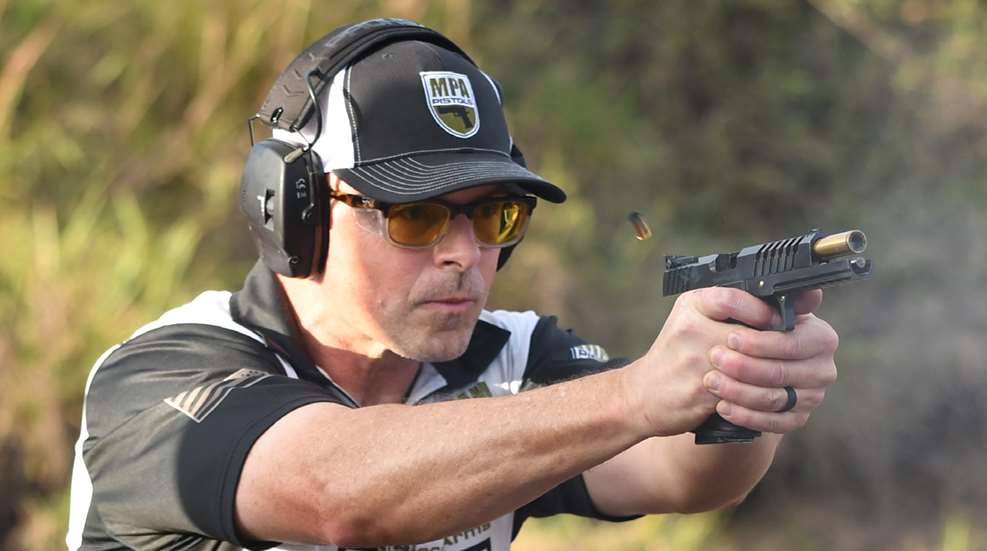In performance shooting, it is said that firearm mastery is achieved by the seamless integration of timing, flow, and form—three pillars that separate the elite from the average. A professional shooter achieves peak performance by forging these foundational elements into subconscious execution, ensuring that every movement is purposeful, every decision is automatic and every shot is placed with calculated intent.
Timing
Timing is the precise coordination of movement, perception and decision-making to achieve peak performance in each task. In performance shooting, timing governs how efficiently a shooter can manage their firearm, process visual information, and maintain mental clarity to execute accurate shots under pressure. It is not just about speed; rather, it is about the seamless integration of multiple processes to create a controlled and repeatable outcome. Just as an athlete refines their timing through structured drills and practice, a shooter must train their physical, visual, and mental faculties to work in unison.
Timing dictates how effectively a shooter can manipulate their firearm, from drawing and presenting it to managing recoil and resetting for follow-up shots. Every aspect of gun handling, including reloads, malfunction clearing, and trigger control, must be executed with precision and efficiency. A well-trained shooter develops an innate ability to synchronize these mechanical processes, ensuring that each action flows smoothly into the next without wasted movement or hesitation.
Beyond mechanical proficiency, the visual process plays a critical role in timing. The shooter must strike a balance between focus and awareness—understanding when to shift their vision between their sights, targets and peripheral environment. Much like a fighter learning to track and react to an opponent’s movements, a shooter refines their ability to process visual information in real time, ensuring that sight alignment, target acquisition and transitions happen with seamless efficiency.
The mental process ties everything together. Staying mentally connected to the overarching shooting process—bringing stability to alignment and executing shots with deliberate control—ensures consistency under pressure. Just like a boxer hones his timing through drills with a speed bag and a top-and-bottom bag to develop rhythm, reaction and control, a performance shooter uses dry-fire training, live-fire drills and structured repetitions to build an ingrained sense of timing. By training the mind to anticipate and adapt, the shooter enhances their ability to remain calm, execute precise movements and deliver shots with confidence and consistency.
Flow
Flow is a psychological and physiological state of complete immersion and optimal performance, where actions feel effortless, time slows down and execution becomes instinctive.
Coined by psychologist Mihály Csíkszentmihályi, flow describes the experience of being fully absorbed in an activity where skills and challenges are perfectly balanced, leading to heightened focus, efficiency and precision. In this state, distractions fade, decision-making becomes seamless and an individual operates at peak performance with minimal conscious effort.
In performance-driven disciplines such as shooting, flow plays a crucial role in achieving mastery. It enables you to execute complex sequences with precision while maintaining adaptability.
When a shooter enters a state of flow (aka ‘flow state’ – some say “being in the zone’), movements—such as drawing, transitioning and aligning sights—happen fluidly without overthinking (paralysis by analysis). Instead of consciously processing every step, the mind and body work in unison, allowing for lucid reactions and heightened environmental awareness.
Shooters seeking to significantly enhance their skills have no choice but to integrate flow as a foundational tool for mastery. Flow ensures efficiency, consistency, and refinement by allowing actions to progress seamlessly from one step to the next. Just as an athlete develops myelination through repeated drills, an elite shooter cultivates flow to optimize performance.
Flow transforms training into on-demand-performance, bridging the gap between mechanical execution and developed instincts. Whether refining fundamentals or pushing performance limits, flow is the key to peak competence and confidence.
Form
Form refers to the foundation of movement, control, and precision in any physical skill. Good form is the ability to execute movements efficiently, with stability, balance, and fluidity, eliminating unnecessary motion while maintaining complete control.
A professional shooter’s performance appears effortless. This is because their form is refined to the highest level, allowing them to move with precision, economy of motion, and adaptability under pressure. Even an untrained observer can recognize this mastery, as the movements appear crisp, clean, and instinctively fluid, without hesitation or wasted effort.
Good form is seen in stable firing platforms, controlled weapon manipulations, and precise shot execution. Professional shooters demonstrate this through fluid presentations, durable grip and trigger control, and efficient movement between shooting positions. There is no excess motion—only deliberate, controlled actions that optimize accuracy and efficiency. Good form allows a shooter to maintain complete control of their firearm from start to finish, ensuring consistent round placement and seamless transitions. Good form is not just about looking proficient—it is about achieving maximum efficiency, precision, and control in every action.
Mastery in performance shooting is built on a bedrock of timing, flow, and form. Each plays a foundational role in refining a shooter’s ability to operate efficiently, execute with precision, and maintain consistency under duress. Whether in competition or defensive application, those who embrace these fundamentals train to execute with deliberate precision and achieve success when it matters most.
Read the full article here

